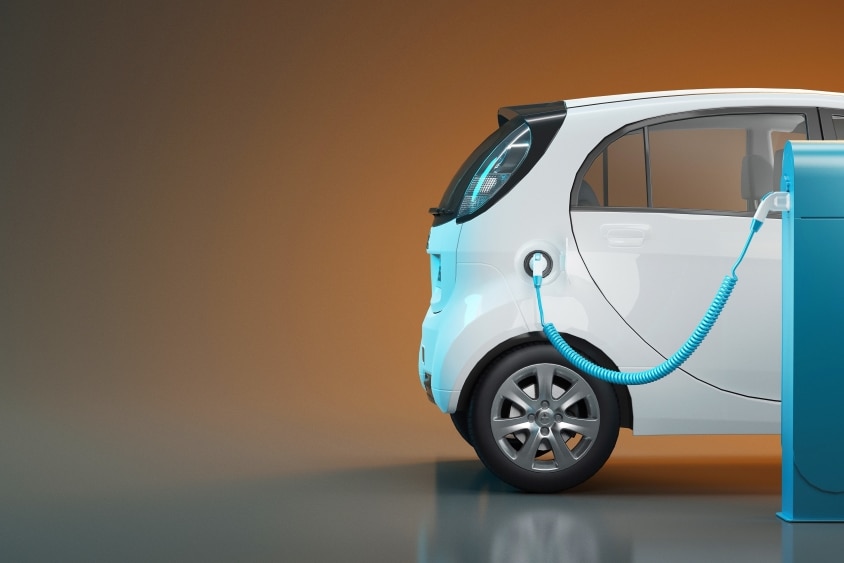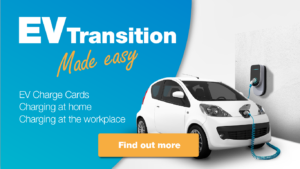What does electrification mean for your fleet?
Written by: Simon Pavey, Last updated:19th April 2023

Electrification is one of the biggest buzzwords for fleets as we move towards NetZero2050. Transport continues to contribute a huge amount of pollution, accounting for 24% of UK emissions in 2020 and standing as the largest emitting sector in the country. Fleet electrification is an essential step for operators who want to become accountable, decrease their carbon footprint, and maintain a good reputation for sustainability.
Fleets can look very different from business to business, and electrification can mean different things depending on what the specific vehicle architecture within your fleet looks like. That’s why this article will examine what fleet electrification is and how it can impact different businesses.
What is fleet electrification?
Electrification is about removing technologies that operate using fossil fuels and replacing them with tech that uses electricity instead. For fleets, this primarily means shifting from combustion engine vehicles to hybrid and electric vehicles and supporting the installation of the infrastructure necessary to support them.
What does fleet electrification look like for different fleets?
Fleets look different from business to business, and can have a range of different vehicle types that can make the process of electrification really varied.
Vans and LCVs
There are over 1.5 million vans registered to UK companies, of which only 0.3% in 2019 were ultra-low emission vehicles – making this vehicle category a prime subject for electrification. The variety of electric vans on the marketing is increasing, as is the support on offer to help facilitate the purchase of these vehicles.
The Plug-In Vehicle Grant includes a range of low emission and electric vans offered at discount prices to help increase the uptake of these more sustainable vehicles by last mile deliveries, professional services and other businesses with fleet vans. The discount is automatically added to eligible vehicles.
You can read more about electric last mile vehicles here.
HGVs and Buses
For heavier goods and passenger vehicles, electrification can seem like a significant challenge. With mileage one of the main concerns for those looking to switch to electric vehicles, HGV, bus, and coach drivers might be hesitant to put faith in electric alternatives due to the need for long distance mileage.
Despite this concern, the technology in electric vehicles is rapidly improving and we are seeing the mileage capability of larger EVs increase significantly with fully electric HGVs now capable of up to 110 miles on a single charge.
You can read more about electric HGVs here.
Cars
The most common type of vehicle on the roads, cars, are an essential in the personal and working lives of many, and if you drive a company car or manage a fleet of cars then electrifying your vehicle/s might be of interest to you. Electric cars have seen significant development in the last decade and the choice for these vehicles is vast, putting those looking to invest in electric fleet cars in a beneficial position.
For taxi businesses interested in expanding their fleets electric vehicles, the aforementioned Plug-In Vehicle Grant similarly offers discounts on taxis offering savings of up to £7,500. There are also approaches to the acquisition of electric cars you can take to help ease the cost and convenience including salary sacrifice schemes that encourage uptake with staff.
You can read our deep dive into the real cost of electric cars for UK fleets to learn more about what electrifying your company cars will look like financially at every step of the process.
Electrification for SMEs
While larger companies might be in a better economic position to make larger short-term investments into electric vehicles and the charging infrastructure to support them, SMEs might find the initial costs of electric vehicles and vehicles charge points off putting. However, there are still options for SMEs.
With an increasing uptake of electric vehicles both at home and by businesses as we move closer toward our collective NetZero goal, there are range of government support schemes in place to help with the cost of both electric fleet acquisition and the cost of implementing charging infrastructure.
Workplace Charging Scheme
Expanding your EV fleet is not just as simple as acquiring the vehicles, and in order to make electric fleet vehicles really work for your business it could be worth equipping your business’ premises with charge points so as not to rely solely on public charging.
The Office for Zero Emission Vehicles offers the Workplace Charging Scheme to help support businesses with cost of installing electric vehicle charge points at work places, offering as much as £350 per socket and up to 40 sockets per business.
You can read more about the Workplace Charging Scheme including the requirements, eligibility terms, and details on how to apply here.
The Plug-In Vehicle Grant
We’ve mentioned the Plug-In Vehicle grant, which offers a discount on purchases on eligible new electric and hybrid or ‘plug-in’ vehicles. This is a discount that is applied automatically at the dealership, and can benefit businesses looking to invest in electric vans, motorcycles/mopeds, trucks and taxis. Unfortunately, the scheme no longer includes cars.
For those looking for ways to help fund the introduction of electric cars to a business fleet, read our article on salary sacrifice for electric cars.
Our growing EV solutions
With the acquisition of fleet vehicles, it pays to be set up with the right tools. From installing charging points to covering the costs of recharging on the road, Fuel Card Services can help. We have a growing range of electric vehicle charge cards to choose from and are expanding our range of electric services.
Get in touch today if you want to learn more about the electric vehicles services we’ll be offering or refer to our EV solutions for news, updates, and information.
back



